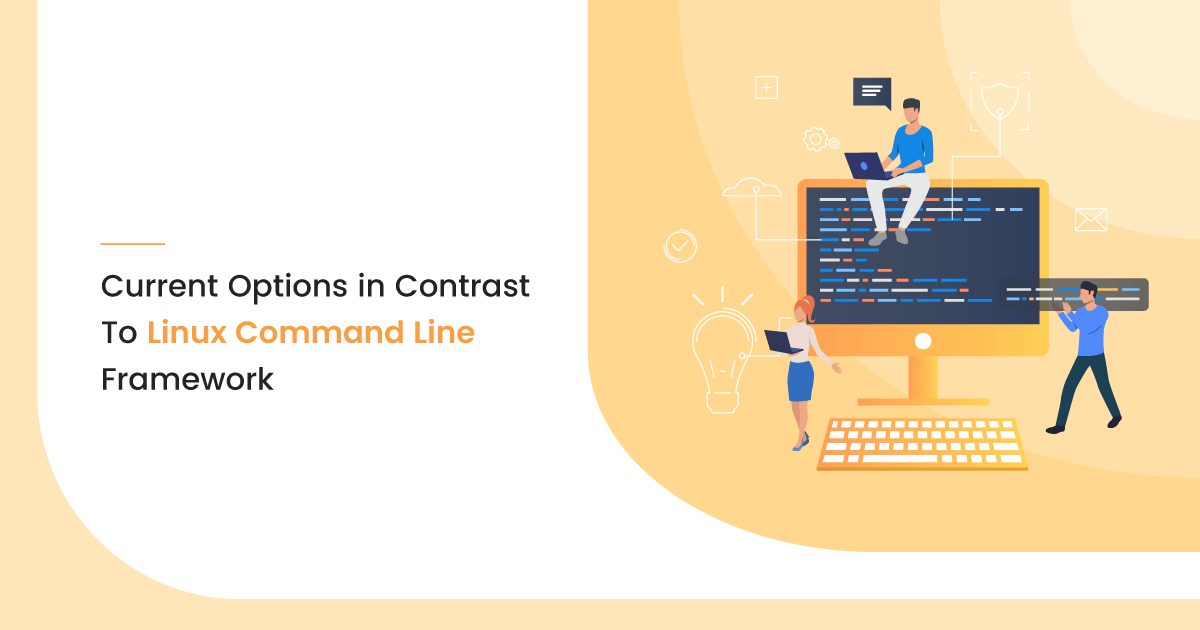Do you use Linux/Unix systems in your everyday routine?
If so, you would be well aware of the command line tools you may utilize to complete your work or manage the system. But, do you know that this Linux command line framework has been in use for decades? Yes! The command line top was first released in 1984, whereas du’s release dates back to 1971.
However, with the rapid growth of web development companies, these tools have been modernized. Moreover, they are ported to different systems. Despite this, they still stick to their original look, feel, and idea.
As these Linux command prompts are crucial to many administrators’ workflows, the open-source community has come up with some alternatives along with added benefits. Designed to improve usability, these tools are certainly an excellent choice for modern systems. But before we delve deeper into these alternatives, let us quickly overview what the Linux command line is.
What Is The Linux Command Line?
Often referred to as Shell, Terminal, Prompt, Console, and various other names, the Linux command line is a text interface to your computer. If you haven’t used it before, it may appear complex and confusing to use. However, with a bit of practice and some popular command-line tools, you’ll soon enjoy working with it.
So, without any further ado, let’s ride on the top 5 Linux command line alternatives and make your job easy-breezy.
5 Best Options In Contrast To Linux Command Line Framework
1. ncdu
NCurses Disk Usage (ncdu) is a replacement for du. Along with Linux, it is available for multiple platforms.
Though it provides similar results to du, ncdu’s interactive interface focuses more on the disk space utilization by directories. It first analyzes the disk and then displays the results – starting from the directories or files that are most used.
Below is an example of how your ncdu results will appear-

It lets you navigate to any of the entries using the arrow keys. To view the content of a specific directory or file, press ‘Enter.’ This helps you identify the space hogs on a remote server and desktop systems.
Some of the operations that you can perform with the ncdu results are-
- To return to the previous directory, press the ‘left’ arrow key
- To delete files, press the ‘d’ key
- For read-only access, use ncdu -r
2. fd
fd is a replacement for the find. Similar to ncdu, it is available for many Linux distributions.
Though it doesn’t overpower the complete functionality of find command, it does provide some sane defaults to speed up the process. For instance, fd runs a case-insensitive pattern search in the current directory with colored output by default. On the contrary, find requires you to add some command line parameters to obtain the same results.

fd delivers faster and more accurate results on the first go as compared to find. If you are searching source-code files, fd will give you results, excluding hidden files and directories.
To enhance your search further, you can utilize fd in the following ways-
- To search your markdown files, write $ fd .md
- To include hidden files and directories in your search results, use -H3
3. jq
jq is a replacement for sed/grep for JSON. It comprises several features that deal with your JSON data seamlessly.
If JSON is your go-to option for daily tasks, jq might prove immensely helpful. The main advantage of jq over sed or group is that it understands the JSON data structure. Thus, you can create a complex query with a single expression using jq.

If you run the grep Linux command line for ‘roll,’ it will return all lines that contain the word ‘roll.’
| $ grep roll Students.json
“roll”: 3, “roll”: 55, “roll”: 12, |
To enable it to return only the desired result, you will require adding some expressions to restrict it from returning all lines with ‘roll.’ However, you can eliminate this process with jq. As it understands the JSON data structure, all you need to do is add the array element index to the expression.
| $ jq ‘.spec.Students[1].roll’ Students.json
“3” |
No matter what the file format is, jq provides the same results. Whereas, grep and sed may return slightly different results if the file format changes. Thus, jq works well with your JSON data.
4. tldr
tldr is an alternative for man. It is an acronym for “too long; didn’t read.” You can say that it is internet slang for a long text summary. For many tools, the man pages are still the canonical and complete source of information. However, if man is too much, you can utilize tldr.
tldr simplifies command utilization information, i.e., it works as a client for tldr pages project community. At times, when you need to retrieve only the basic information about a command, tldr is an ideal Linux command line alternative. For instance, if man returns 4,000 lines of data, tldr gives you the same in about 40 lines; thus, making it easy to understand.

A strong internet connection is a must for using tldr as it requires internet connectivity to consult the tldr pages.
5. htop
htop is a better alternative to top. Though it displays the result similar to top, it is visually more appealing. This interactive process viewer shows the same metrics as top but in a pleasant and colorful display.
When you use top command line framework, you get results as follows:

On the contrary, htop gives you a colorful result, as shown below:

Moreover, as you can view in the above images, you will notice that htop provides you with a system overview at the top and a command bar at the bottom. It also displays the function keys using which you can trigger any of those commands. In addition to this, you can customize the result by changing the colors, adding/removing metrics, or altering the display options in the overview section.
Thus, htop is a friendly and easy to use process viewer in comparison to top.
Summing Up
If you are still using the old Linux command prompts, the alternatives listed here will provide some more benefits to derive valuable results. Try them to manage your work on Linux systems.
Are you familiar with any such alternatives that we missed out on? Do mention them in the comments section below.
Need Any Technology Assistance? Call Pursho @ 0731-6725516







